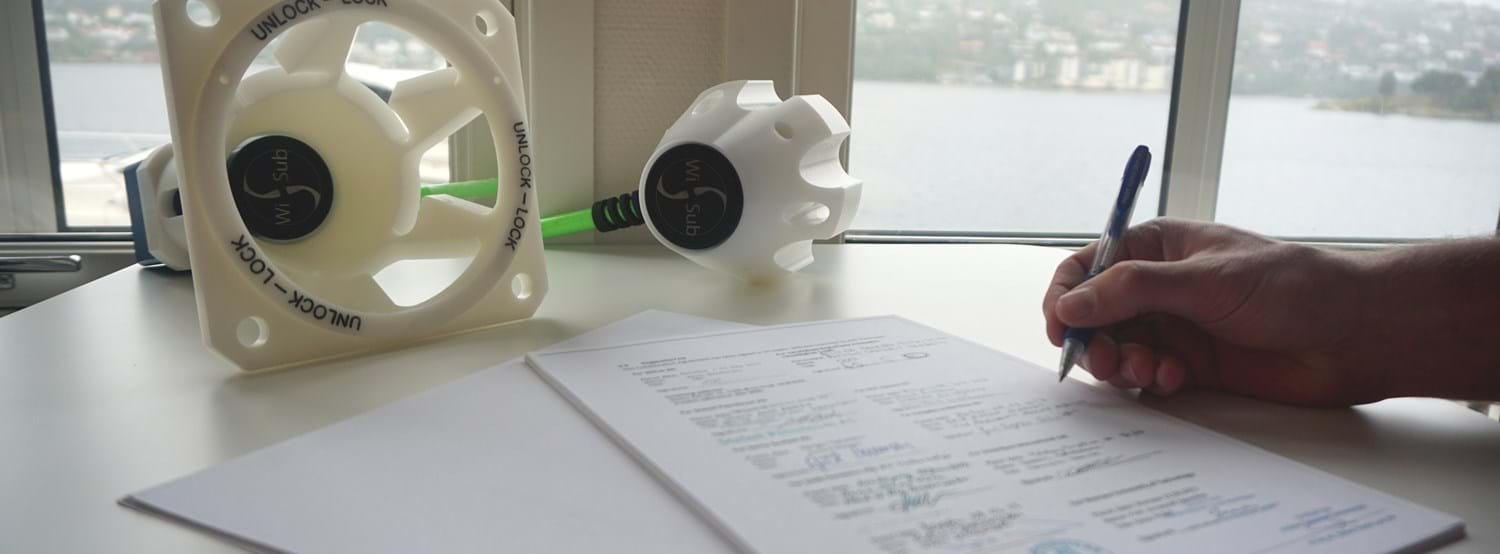Wisub – Pinless AUV Interface

The Bergen-based subsea technology company Wisub has extended their subsea pinless connection systems to include solutions for AUV pinless charging and data transfer. They have been awarded project funding for this development from a joint Norwegian-Brazilian R&D funding programme.
Autonomous Underwater Vehicle (AUV) systems require costly and risky surface vessel support for recovery, to retrieve data, recharge, and re-launch. To deploy these systems for prolonged periods of operation supported by cabled underwater power and data network, a robust subsea charging and communications interface is required.
The Solution
WiSub’s pinless connection systems are essential to enable automation of the subsea factory via resident AUV systems. The project will deliver power levels sufficient to attain a universal AUV connection, enabled by combining with WiSub’s patented high-speed pinless data connection. WiSub has established a JIP to develop and standardise this connection, together with international project partners University of Bergen, DOF Subsea, easySubsea, Kongsberg Maritime, SAAB, Sonardyne, Statoil, Swire Seabed, and Warsaw University of Technology. The project has received support from The Research Council of Norway under their Petromaks2 funding programme as “Universal AUV Pinless Charging and Data Transfer Interface”.
Support from GCE Subsea
Wisub participated in the Subsea First Step business acceleration programme in 2011, and has received GCE Subsea pre-project funding twice. GCE Subsea also supported WiSub during the company’s first Petromaks application in 2012; the lessons learned from writing that winning application and delivering on the R&D have strengthened WiSub’s ability to perform world-leading research. – Collaboration is in the DNA of both GCE Subsea and WiSub, both advancing by working collaboratively with their stakeholders to achieve the goals of the collective, says Olof Nilsson, Project manager at Wisub.
Results
The project represents one of the first projects funded under the BN21 collaboration initiative between Brazil and Norway. The project will receive 2,9 million Norwegian kroner from Norwegian R&D funding sources; a similar level of support has been awarded to WiSub’s partner easySubsea in Brazil from the Brazilian funding agency Finep. – Several of the partners in the project are potential users of the final results, which should help proliferate the project and introduce the product swiftly into the market. Project success also means closer collaboration between Brazil and Norway and the companies involved, for mutual benefit and growth, Olof Nilsson adds.
Olof Nilsson, Project Manager, Wisub:
“GCE Subsea has helped improve WiSub supply chain and business network by holding relevant networking events, also proactively introducing us to individuals and organisations important for our success. GCE Subsea’s influence has been a force multiplier for WiSub. Ultimately, their efforts will strengthen Norway’s leadership position in the subsea industry internationally.”
For more information go to the Wisub website.
Contact Information

Fact Box
Oil Companies are currently looking at the possibility of deploying electrically operated resident AUVs and ROVs on the seabed at their offshore installations to reduce cost and improve response time.
Such deployment will require docking stations where the underwater vehicles can be charged and submit data while not in operation.
